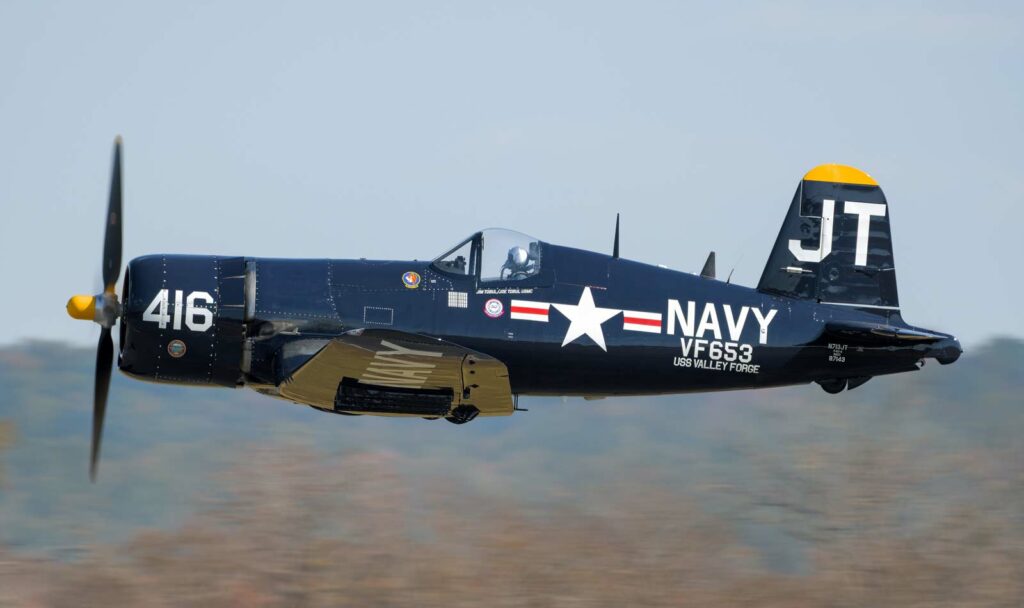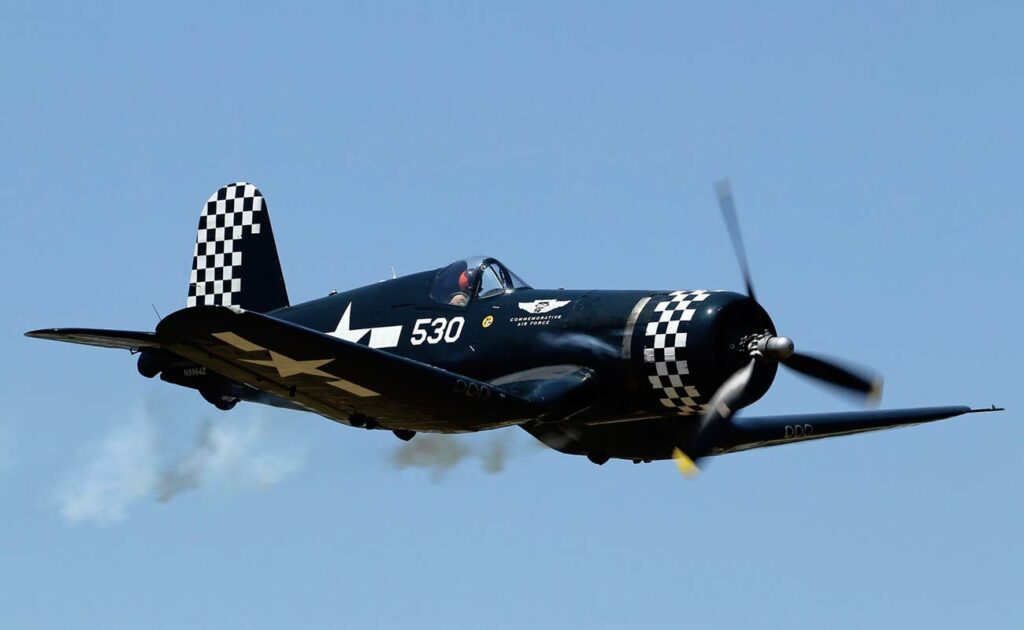The Vought F4U Corsair, a WWII American fighter aircraft, is renowned for its 2,000 HP Pratt & Whitney R-2800 engine, distinctive gull wings, and exceptional performance in both Pacific and European theaters.
This article provides a comprehensive analysis of the Vought F4U Corsair, a pivotal American fighter aircraft of World War II. It examines the Corsair’s development history, innovative design, remarkable performance, and its extensive military use, highlighting its impact and legacy in aerial combat history.
The Vought F4U Corsair stands as one of the most iconic American fighter aircraft of World War II. Known for its distinctive design and formidable performance, the Corsair played a crucial role in both the Pacific and European theaters. This article aims to explore the development, design, performance, and combat history of the F4U Corsair, offering insights into its significance in military aviation.

History of the Development of the Vought F4U Corsair
The development of the F4U Corsair was driven by the United States Navy’s need for a superior carrier-based fighter to match the increasing aerial threats of the late 1930s and early 1940s. In response, Vought, an American aerospace manufacturer, initiated the design of a new fighter aircraft.
The development program was launched in 1938, led by Vought’s chief designer, Rex Beisel. The primary objective was to create a fighter with unmatched speed, range, and firepower, capable of achieving air superiority. The Corsair’s first flight occurred on May 29, 1940.
Its development was crucial in the context of rapidly evolving aerial combat technology and strategies during World War II.
Design of the Vought F4U Corsair
The F4U Corsair featured several innovative design elements that contributed to its distinctive appearance and performance. It was equipped with a powerful Pratt & Whitney R-2800 Double Wasp radial engine, capable of producing 2,000 horsepower (1,491 kW). This engine drove a large, 13-foot (3.96-meter) diameter propeller, necessitating the Corsair’s signature inverted gull wing design to provide ground clearance.
The aircraft had a length of 33 feet 4 inches (10.16 meters) and a wingspan of 41 feet (12.5 meters). The gull wing design not only solved the ground clearance issue but also improved aerodynamic efficiency and reduced drag.
One drawback of the Corsair’s design was its initially poor carrier landing performance, attributed to visibility issues and landing gear challenges. However, these issues were eventually resolved, and the Corsair became an outstanding carrier-based fighter.
Performance of the Vought F4U Corsair
The performance of the Corsair was remarkable for its time. The R-2800 engine enabled a top speed of about 417 miles per hour (671 kilometers per hour) and a service ceiling of 36,900 feet (11,247 meters). The aircraft had a range of 1,005 miles (1,617 kilometers), allowing for extended missions.
When compared to contemporaries like the Japanese Mitsubishi A6M Zero and the German Focke-Wulf Fw 190, the Corsair demonstrated superior speed, firepower, and durability. Its performance in various combat scenarios showed it to be one of the most capable fighters of the war.

Military Use and Combat of the Vought F4U Corsair
The F4U Corsair was heavily armed with six .50 caliber (12.7 mm) M2 Browning machine guns, and it was capable of carrying bombs and rockets for ground-attack missions. It saw extensive combat in the Pacific Theater, particularly in battles against Japanese forces. The Corsair was known for its air superiority, ground attack capabilities, and versatility as both a land-based and carrier-based fighter.
It also served in the European theater, though its primary fame was earned in the Pacific. The Corsair was exported to several Allied nations and continued to see service post-World War II, including in the Korean War.
The F4U Corsair was eventually replaced by jet fighters in the late 1950s, marking the end of its operational life in the U.S. military. However, its impact on aerial combat and its status as a symbol of American airpower during World War II remain undisputed.
The Vought F4U Corsair’s development, design, and combat history represent a significant chapter in World War II aviation. Its exceptional performance, distinctive design, and versatile combat roles established it as one of the most memorable and effective fighter aircraft of its time. The Corsair’s legacy continues to be celebrated in aviation history, symbolizing the technological advancements and strategic achievements of aerial warfare during the war.
Back to the Warbirds section.